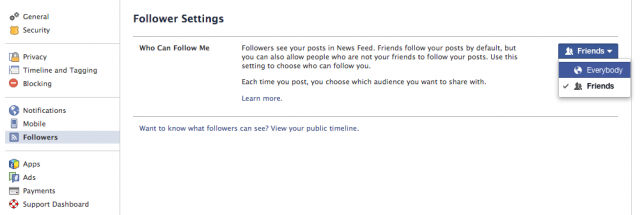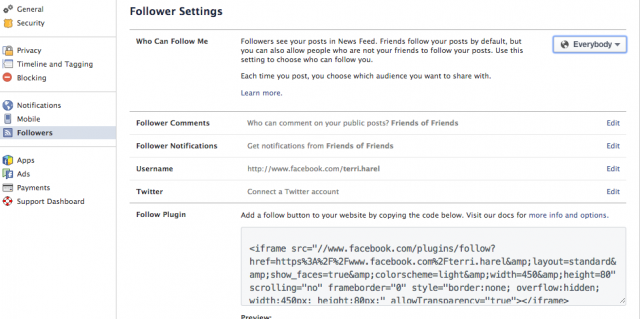The New Facebook Algorithm Generates New Ideas for Nonprofit Marketing

Previously, we discussed the new Facebook algorithm and its potential effect on nonprofit organization pages. As a result of an increasing amount of content available to Facebook consumers, it seems that the best way for brands to reach their fans these days is by paying. As we wrote earlier though, these seemingly disturbing changes to the algorithm can also be thought of as a challenge to become a smarter marketer (however more involved that process might have to be). Ultimately, wherever your opinion of the changes falls on the spectrum, it can’t be denied that the new, unnamed algorithm (formerly Edgerank) generated a lot of chatter in the marketing world, with an onslaught of suggestions pouring out from social media blogs across the web.
A while back, one of my personal favorite blogs by Buffer, a social network scheduling application, published an awesome post titled “9 Ways to Counteract Facebook’s Big Algorithm Change.” They have a lot of great tips in there, but I wanted to elaborate on them to apply the tactics specifically for nonprofit organizations.
Learn How to Use Classy’s Facebook Integration With This Free Guide
Here are 9 ways to build upon Buffer’s suggestions and utilize them in your nonprofit organization’s Facebook strategy:
Buffer Suggestion #1: Don’t give up on Facebook – reap the benefits of having a Page and keep it updated
Classy’s Interpretation for Nonprofits #1: Don’t just keep on with business as usual, become a better marketer
As discussed on our Facebook post from last week, we concluded that brands definitely should not give up on their Facebook pages. After all, Facebook is the largest social network in the world, and there is research to support social influence as an increasingly important motivator to engagement and giving. No matter the Facebook algorithm, “don’t work harder, work smarter,” pay attention to what works and what doesn’t and make use of the Insights analytics page Facebook provides for your page.
Buffer Suggestion #2: Focus more time on community building
Classy’s Interpretation for Nonprofits #2: Don’t just ask questions, create cause champions
Even before the new Facebook algorithm, yelling at fans has never garnered the attention that translates into active engagement. Buffer suggests being genuinely interested in your fans’ opinions and feedback to generate an involved community of fans. By speaking directly to followers, and replying to their questions and comments, you are including supporters in your mission. Even though the interaction is virtual, creating these more personal relationships on social media can prompt fans to become involved champions of your cause.
Perhaps you can personally contact the most active community members during a campaign, say thank you for their ongoing participation and ask them to spread the word or recruit them for special volunteer opportunities. Either way, direct engagement is a unique opportunity to grow a circle of cause ambassadors who can leverage their own social networks when you most need it.
Buffer Suggestion #3: Use your profile and groups for extra reach
Classy’s Nonprofit Interpretation #3: Make new friends who believe in your mission
Buffer suggests allowing the public to follow your personal profile as a way to expand reach in the midst of the new Facebook algorithm. While this might be a touchy subject for some who wish to separate work from play, this is definitely an interesting way to connect with new audiences and people that believe in your cause. If you allow your followers to comment on your personal page posts, you might connect with others passionate about the same cause and find a future opportunity to take them on as donors or supporters for your nonprofit.
On your nonprofit’s Facebook page, suggest Fans follow staff members or, if they agree, embed your blog writers’ Facebook follow buttons in each post they write for your organization. They’re likely to share the content they write and could generate additional traffic to your site as well as recruit new advocates for your cause.


Buffer Suggestion #4: Keep experimenting with Facebook’s new features
Classy’s Interpretation for Nonprofits #4: Remember visual storytelling?
Buffer makes a great point here. Facebook is acquiring new services and some experts suggest they will be prioritizing posts from these channels. The most publicized purchase Facebook has made is Instagram, which is a great visual storytelling tool increasingly used by many nonprofit organizations. (For more on best practices for using Instagram, click here). Another, more recent, acquisition is a service called Branch, which aims to bring people together around a particular piece of web content and strengthen conversation webs between them. Branches can be linked to and shared, allowing people to read the entire thread post facto.
Share your new campaign video via Branch, invite supporters to comment via e-mail and share a link to the conversation on Facebook!
Buffer Suggestion #5: Build your own platform — a marketing channel that you own
Classy’s Interpretation for Nonprofits #5: There’s no place like home for your organization
At the end of the day, social media is not the only key to successful marketing. There are a lot of other factors that play into a brand’s success: from blogging, to effective web design, to creative and consistent e-mail campaigning there’s more to marketing than building out social networks. Although they’re useful, your site and web assets are where you maintain complete freedom and flexibility. Promote your mission through well thought-out strategy on your own web pages, building trusted partnerships with other organizations and individuals and by networking at events that build community and support systems in your sector.
Buffer Suggestion #6: Move to an email list — use your Facebook Page to encourage signups
Classy’s Interpretation for Nonprofits #6: E-mail isn’t a step down, it’s an opportunity to grow
You might be surprised by this, but email is still a more effective marketing tool than Twitter and Facebook. Encourage supporters to sign up for email updates and frame the message in the context that, due to the algorithm changes on social media outlets like Facebook, they might miss out on your nonprofit’s news and initiatives if they’re only Facebook fans. This might also be a great opportunity to gain more involved supporters that had previously only been casual observers of your cause.
An additional note to building an email list: create a closed loop. Conquer the new Facebook algorithm by adding social media sharing buttons to your emails, allowing recipients to share your content with their personal networks, which might have a better chance of being seen by a larger audience. Don’t be afraid to use your cause champions as additional marketers for your nonprofit!
Buffer Suggestion #7: Try building your audience on other networks as well
Classy’s Interpretation for Nonprofits #7: Segment your audience and explore new ways to tell your story
As we all know, it is important for nonprofit organization to demonstrate social impact. Visual storytelling lends very well to showing supporters the tangible and concrete change your organization is initiating in its respective sector. It will be useful to get a better understanding of who your audience is, where they tend to congregate online and to incorporate other visual social media tools like Vine and Instagram into your reports from the field, or behind the scenes at the office or an event.
Also, you should segment your email list and send out different social media mediums to particular supporters. This might take a bit of research in the beginning, but it could have rewarding payoff in click rates and building followings on other social media outlets that focus on visual storytelling.
Buffer Suggestion #8: Ask your followers to help
Classy’s Interpretation for Nonprofits #8: Your nonprofit organization is great at asking for help, use that skill!
As a nonprofit organization, you’re used to asking for assistance in raising money, spreading the word about a new campaign or for people to volunteer their time. Through your emails, Facebook page or Twitter, let others know the algorithm change may be affecting your nonprofit’s reach and don’t hesitate to ask for a bit of assistance in announcing that new run/walk registration and fundraising event, your newest creative fundraising campaign, or sharing a beneficiary’s personal story.
Buffer Suggestion #9: If you do advertise on Facebook, be clever about it
Classy’s Interpretation for Nonprofits #9: Don’t hesitate to give advertising a try, but think it through
We couldn’t say anything more than Buffer on this one as it applies well to all entities thinking about advertising.
- Try retargeting: serve up ads to users who have recently visited your website without making a purchase, since they’ve already shown interest.
- Advertise content, rather than your company: ads that focus on content like eBooks, webinars or podcasts are more likely to receive engagement that company- or product-focused ads.
- Use targeting aggressively: take advantage of Facebook’s demographic data to target your customers carefully, rather than wasting money on showing ads to users who probably aren’t interested in your product.
Despite all the uproar surrounding changes on Facebook, there seems to be a lot of ways to adapt, expand, grow, learn and succeed!
Image Credit: Colectivo Mambembe
The BIG Guide to Social Media for Nonprofits
Subscribe to the Classy Blog
Get the latest fundraising tips, trends, and ideas in your inbox.
Thank you for subscribing
You signed up for emails from Classy
Request a demo
Learn how top nonprofits use Classy to power their fundraising.



